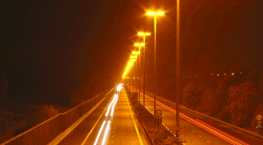Sustainable industrial policy aims in particular at developing a policy to foster environmental and energy efficient products in the internal market. The Ecodesign Directive 2009/125/EC [pdf] is the cornerstone of this approach. It establishes a framework for the setting of ecodesign requirements for energy-related products with the aim of ensuring the free movement of those products within the internal market. Directive 2009/125/EC repealed the original Directive 2005/32/EC for the setting of ecodesign requirements for energy-using products. It prevents disparate national legislations on the environmental performance of these products from becoming obstacles to the intra-EU trade and contributes to sustainable development by increasing energy efficiency and the level of protection of the environment, taking into account the whole life cycle cost.
The Ecodesign Directive itself does not set binding requirements on products: it provides a framework (rules and criteria) for setting such requirements through implementing measures. It is also possible to introduce information requirements for components and sub-assemblies. The Commission prepares implementing measures only for products which have significant sales and trade in the EU, a significant environmental impact and potential for improvement. Product groups are identified following the procedure described in Article 16.
The preparatory study
On 7 December 2012, the Commission adopted the second Ecodesign Working Plan 2012-2014 [pdf]. This Working Plan includes an indicative list of twelve broad energy-related product groups to be considered for the adoption of implementing measures between 2012 and 2014. For some of the identified product groups, possible overlaps may exist with a number of ongoing preparatory studies and regulations due for review. Resulting into the list of product groups split up into a priority list and a conditional list. The product group lighting controls/systems are on the conditional list, due to its dependency on the outcome of ongoing regulatory processes and/or reviews.
According to the principle of better regulation, preparatory studies will collect evidence, explore all policy options and recommend the best policy mix (ecodesign, labelling, EPBD and/or self-regulation measures), if any, to be deployed on the basis of the evidence and stakeholder input. The scope of this preparatory study is to carry out a limited preparatory study on lighting systems for the exploration of the feasibility of ecodesign, energy labelling, and/or energy performance of building requirements. The options of where to go next include a basic idea on how to implement possible measures, without going into detail. The energy-saving potential of the options is considered, but not the political feasibility. The options can be further addressed in a possible full preparatory study.
This study follows the structure of Tasks 0 up to and including 4 and Task 7 of the Methodology for Ecodesign of Energy-related Products (MEErP). More information on the methodology can be found in the section Methodology & FAQ of this website. Furthermore, it builds upon existing ecodesign and energy labelling legislation on lighting products (see section below).
The following three topics will be examined in this study, with consideration of residential as well as non-residential lighting:
- If the scope of the legislation on lighting products should be opened to lighting systems;
- If there are any issues left uncovered; and
- If there are loopholes in the existing legislation.
Existing ecodesign and energy labelling legislation on lighting products
There are three ecodesign regulations related to lighting in place, all having their specific scope:
- Commission Regulation (EC) No 244/2009 of 18 March 2009 implementing Directive 2005/32/EC of the European Parliament and of the Council with regard to ecodesign requirements for non-directional household lamps.
Commission Regulation (EC) No 859/2009 of 18 September 2009 amending Regulation (EC) No 244/2009 as regards the ecodesign requirements on ultraviolet radiation of non-directional household lamps. - Commission Regulation (EC) No 245/2009 of 18 March 2009 implementing Directive 2005/32/EC of the European Parliament and of the Council with regard to ecodesign requirements for fluorescent lamps without integrated ballast, for high intensity discharge lamps, and for ballasts and luminaires able to operate such lamps, and repealing Directive 2000/55/EC of the European Parliament and of the Council.
Commission Regulation (EU) No 347/2010 of 21 April 2010 amending Commission Regulation (EC) No 245/2009 as regards the ecodesign requirements for fluorescent lamps without integrated ballast, for high intensity discharge lamps, and for ballasts and luminaires able to operate such lamps. - Commission Regulation (EC) No 1194/2012 of 12 December 2012 implementing Directive 2005/32/EC of the European Parliament and of the Council with regard to ecodesign requirements for directional lamps, for light emitting diode lamps and related equipment.
In addition, the following energy labelling regulation regarding lighting is in place:
- Commission Delegated Regulation (EU) No 874/2012 of 12 July 2012 supplementing Directive 2010/30/EU of European Parliament and of the Council with regard to energy labelling of electrical lamps and luminaires.

